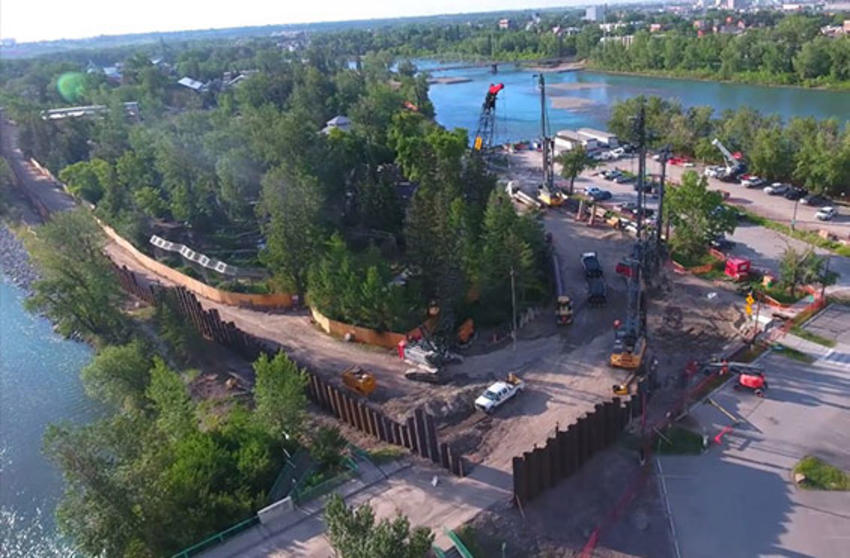Calgary Zoo suffered more than $50 million in damages in the 2013 floods. Now piling by Keller Canada for a new defence wall means this important tourist attraction and conservation centre can continue its vital work.

More than 1.3 million people visited Calgary Zoo in 2015, generating almost $80 million in economic impact, making it the leading tourist destination in Alberta.
To protect the zoo and its popular inhabitants from future flooding disasters, the city launched a major construction scheme to raise the defences to the level of a one-in-100-year event.
The project called for a general contractor and piling specialist, so Keller Canada teamed up with PCL Construction Management Inc. to win a three-way tender run by the City of Calgary and ISL Engineering and Land Services, which designed the wall.
Proving we’re up for the challenge
“ISL had come up with a sheet pile solution, but this was a technique we hadn’t done for a while,” explains Project Manager George Power. “The old way of doing it – using a hanging vibro and false work – was relatively slow and inefficient. However, with new technologies and installation equipment that has changed. We were also able to put together a test programme to find efficiencies, eliminate any quality concerns and demonstrate how we could successfully complete the project using this technique.”
The majority of the zoo sits on St George’s Island in the Bow River, so the scope of works called for 2.1km of sheet piling around the island to prevent both under- and overland flooding. Starting in March 2016, the team drove 1,578 paired sheets through up to 18m of gravel layers and cobble and into the underlying clay stone bedrock.
“What made this particularly challenging is that the zoo remained opened during the project,” said George. “Public safety was always at the forefront of our minds. We also had to ensure we didn’t disrupt the utilities and we had to deal with a number of locations where work space on site was extremely tight due to existing infrastructure. Access / egress of equipment was meticulously planned throughout the project and on a few occasions we even had to install sheets from working platforms constructed within the river.”
Ahead of schedule
Despite the complexities, the team finished almost five months ahead of the original milestone schedule. George puts the success down to an open, collaborative partnership with PCL, careful planning and a smooth execution. “Dealing with the logistics was imperative to our approach, so we had to think about what effect the piles would have on access as we progressed.
“From a project management perspective, having a strong partnership with PCL from day one made the whole contract a lot easier and a pleasure to manage.”
“The zoo was delighted we finished ahead of schedule and I’m sure the city was happy as well because it was getting close to high-water season. For us, the project’s been financially successful and we are confident we can use this technique more widely now.”
“The project has also generated many leads: we’ve had a lot of enquiries from people who have seen us working down there. We’re very happy with the way this entire project has gone and are proud to have helped protect this extremely important landmark for the city.”